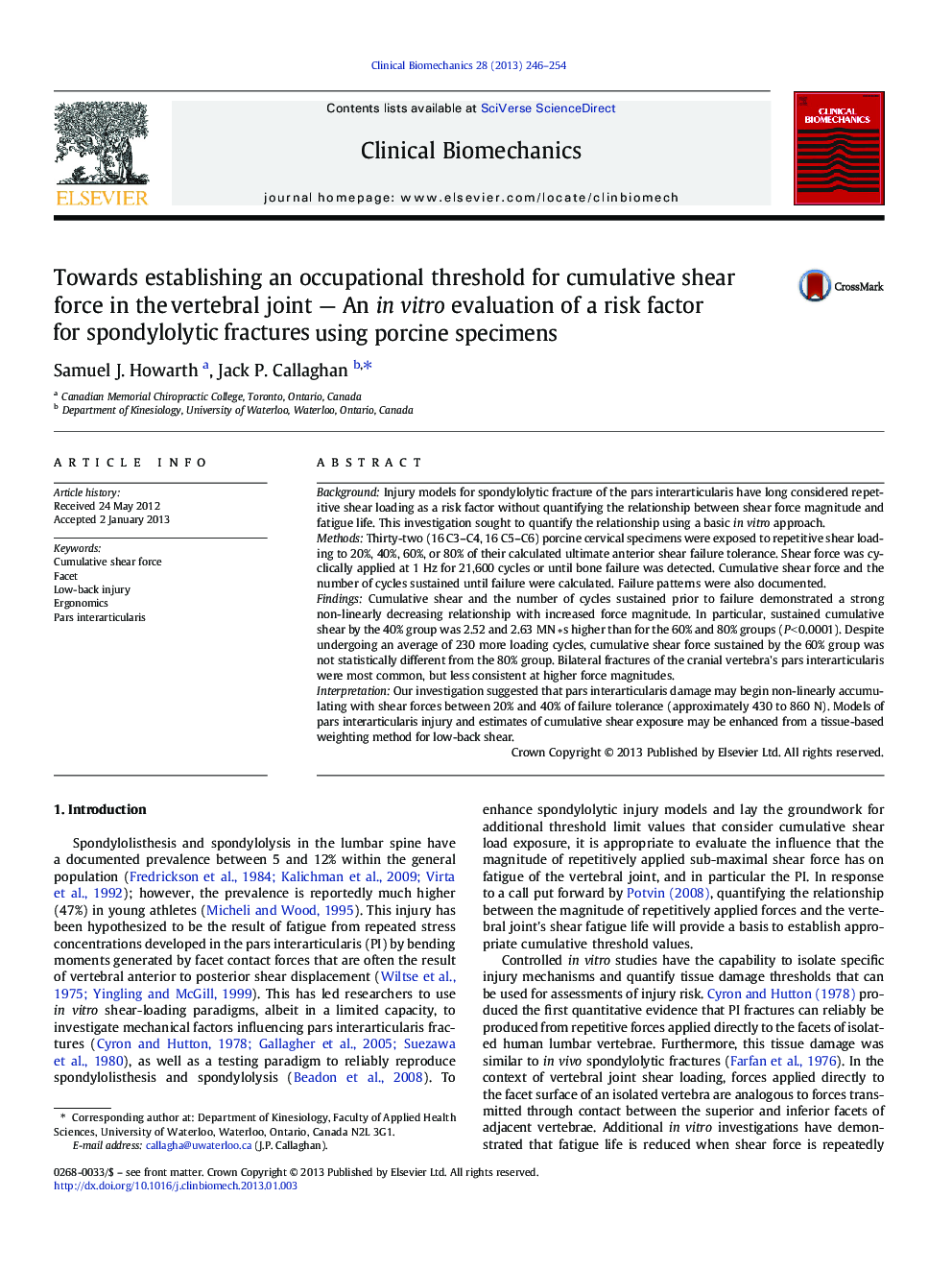| Article ID | Journal | Published Year | Pages | File Type |
|---|---|---|---|---|
| 4050488 | Clinical Biomechanics | 2013 | 9 Pages |
BackgroundInjury models for spondylolytic fracture of the pars interarticularis have long considered repetitive shear loading as a risk factor without quantifying the relationship between shear force magnitude and fatigue life. This investigation sought to quantify the relationship using a basic in vitro approach.MethodsThirty-two (16 C3–C4, 16 C5–C6) porcine cervical specimens were exposed to repetitive shear loading to 20%, 40%, 60%, or 80% of their calculated ultimate anterior shear failure tolerance. Shear force was cyclically applied at 1 Hz for 21,600 cycles or until bone failure was detected. Cumulative shear force and the number of cycles sustained until failure were calculated. Failure patterns were also documented.FindingsCumulative shear and the number of cycles sustained prior to failure demonstrated a strong non-linearly decreasing relationship with increased force magnitude. In particular, sustained cumulative shear by the 40% group was 2.52 and 2.63 MN ∗ s higher than for the 60% and 80% groups (P < 0.0001). Despite undergoing an average of 230 more loading cycles, cumulative shear force sustained by the 60% group was not statistically different from the 80% group. Bilateral fractures of the cranial vertebra's pars interarticularis were most common, but less consistent at higher force magnitudes.InterpretationOur investigation suggested that pars interarticularis damage may begin non-linearly accumulating with shear forces between 20% and 40% of failure tolerance (approximately 430 to 860 N). Models of pars interarticularis injury and estimates of cumulative shear exposure may be enhanced from a tissue-based weighting method for low-back shear.
